|
By Brian Bondy
A month or so back I wrote about driverless taxis, in particular, the Waymo driverless taxis in the Phoenix area. Last week, my brother and I took a Waymo to try it out. My brother has been quite skeptical of these, and after seeing them on the streets, we were both still apprehensive, but also intrigued. Our opportunity came one evening and we decided to take a Waymo to a restaurant. I already had the app on my phone, it was very simple to use. Basically, it comes up and asks where you want to go. It assumes the pickup location is where you are, which can be altered. The app gives you the price of the ride, and you press the button to summon the car, a final bit I unfortunately neglected to do. I realized several minutes later that I didn’t actually press ‘Enter’ so the price went up a dollar. Apparently, pricing is based on demand. In this area, the house where I was staying was just outside the Waymo boundary, so we had a 5 minute walk to the Camelback Inn to meet the car. It tells me this on the app, and it gives a map for where the car will stop. We have 5 minutes, once the car arrives, to get in and start the ride. It also said the taxi was 18 minutes away. We walked down to the Inn and waited. The app said the car was there, but we didn’t see it. Apparently, we were in the wrong spot. I spoke to a hotel worker and he kindly gave us a lift to the back of the hotel lobby where the Waymo was waiting. We got in, and as you can see in the first video, and it was weird. I mean, really weird. There’s no driver. Nobody is in the front seat.
The car has a touchscreen in the back seat prompting us to start the ride, which I tapped. The car then slowly proceeded to make its way out of the labyrinthine parking lots of the Camelback Inn. It was very cautious driving there, on its way to the main road.
The car told us to fasten our seatbelts, signaled the turns, and avoided hitting cars and pedestrians. Once on the bigger street the car drove confidently, not aggressively, but definitely not like it was afraid, like its passengers were. It never exceeded the speed limit. We arrived at our destination in one piece, and again, it was very cautious inside the parking lot. We got out and the car locked itself up and drove off. Click to see how it all ends
The return trip was similar. I requested the Waymo from the restaurant. It picked us up out front, where only it knew exactly where it would stop and unlock its doors. The only comment I can make on its driving was when it left that parking lot and went to cross a 6 lane roadway, I was a bit concerned at it crossing in front of a truck in the suicide lane that was trying to turn into the parking lot. I would have waited, but it did work out fine.
The ride back to the Inn was still exciting, but I have to say, a bit less so. The ride was ordinary, which is exactly what you’d want. It was still weird, and fun, but also, it was a just a taxi ride. The ‘driver’ was confident, and never went over the speed limit. There were some odd movements in the parking lot, but not concerning. One pedestrian seemed to see it was a Waymo and purposely didn’t move out of the way. Maybe that’s his thing, or maybe he doesn’t like Waymo. I would have moved faster than he did, but the Waymo simply moved around him. Since I am all for driverless vehicles, I quite enjoyed the experience. I don’t know when they will get to the Abiquiu area, but for now, I guess I’ll have to drive my car all by myself.
4 Comments
By Sara Wright
Republished from 5/19 According to The Guardian, and every other source I consulted, krill (zooplankton) have suffered an 80 percent decline beginnings in the 70’s and currently creating a starvation scenario for many marine animals from whales to penguins. A recent article in The New York Times states that we have also lost 80 percent of the insects on the planet. Insects and krill (zoo plankton) are at the bottom of the food chain and the loss of these animals on land and in the water is nothing short of catastrophic because all other life forms including humans depend on them to survive. On land the insect loss is directly tied to insecticide use. In the water, pollution (partially due to insecticide use), and increased industrial fishing for krill are culprits. Human induced Climate Change is also a fundamental factor. How is it possible that we are unwilling/unable to face the fact that we are actively engaged in the process of our own self - destruction? I am writing this article on May Day. The cottonwood trees are feathered with pale green leaves, emerald green shoots and wildflowers abound. Gardens and fields are being tilled and planted. Adequate rain has blessed us creating seemingly unbelievable abundance. The river is a raging brown torrent ripping away the fragile shoreline; the acequias are running. The earth continues to celebrate renewal even as life on this planet becomes more threatened with each passing day. Lately, I have been thinking a lot about the marine biologist and author Rachel Carson probably because I have had only one tree frog singing through the cottonwoods. I feel the loss of the abundance of these amphibians keenly, recognizing that pesticides are to blame. I have also spent time in gardening places where all sorts of deadly chemicals are still being sold much to my raging disbelief. My relationship with Rachel Carson stretches back to my childhood. I remember being so proud of the fact that I could read her book “The Edge of the Sea” at age twelve and understand everything she said. After moving from Monhegan Island to Southport Maine as a young mother, I discovered that Rachel Carson’s cottage was situated in the woods just behind my house. Although she died five years before I moved to Southport I suspect her influence on me lived on fueling my need to speak out as an environmental Earth activist, even now. Rachel Carson, writer, scientist, and ecologist, grew up in the rural river town of Springdale, Pennsylvania. Her mother bequeathed to her a life-long love of nature and the living world that Rachel expressed first as a writer and later as a student of marine biology. Carson graduated from Chatham University in 1929, studied at the Woods Hole Marine Biological Laboratory in Massachsuetts, and received her MA in zoology from Johns Hopkins University in 1932. She began a fifteen-year career in the federal service as a scientist and editor and rose to become Editor-in-Chief of all publications for the U. S. Fish and Wildlife Service. Carson wrote pamphlets on conservation and natural resources and edited scientific articles, but in her free time she wrote her first book, Under the Sea Wind. In 1952 she published her prize-winning study of the ocean, The Sea Around Us. She won a National Book Award, a national science writing-prize and a Guggenheim grant, which, with the book’s sales, enabled her to move to Southport Island, Maine in 1953 to concentrate on writing. This book was followed by The Edge of the Sea published in 1955. Together, these books created a biography of the ocean and made Carson publically famous as a naturalist and science writer. Carson resigned from government service in 1952 to devote herself to her writing. Carson’s prophetic Silent Spring (1962) was written in response to the chemical pesticide use that became rampant after World War II. She also recognized that pesticides were killing her beloved birds. The book was first serialized in The New Yorker and then became a best seller, creating worldwide awareness of the dangers of environmental pollution. Silent Spring suggested that the planetary ecosystem was reaching the limits of what it could sustain. She challenged the practices of agricultural scientists and the government and called for a change in the way humankind viewed the natural world. Carson courageously stood behind her warnings of the consequences of indiscriminate pesticide use despite the threat of lawsuits from the chemical industry and accusations that she was too emotional and grossly distorted the truth (criticisms I too have endured as a nature writer – at least I am in good company). Carson was also attacked by the chemical industry and some in government as an alarmist, but continued to speak out to remind us that we are a vulnerable part of the natural world subject to the same damage as the rest of the ecosystem. Outlining the dangers of chemical pesticides graphically, the book eventually led to a nationwide ban on DDT after Carson’s death, and sparked a movement that ultimately led to the creation of the US Environmental Protection Agency. From my point of view probably the most important aspect of Carson’s writings is her view that human beings were just one part of nature distinguished primarily by their power to alter it, in some cases irrevocably. Unfortunately, except for a few folks and some Indigenous peoples, these ideas with respect to species equality and the human ability to alter the earth’s ecology permanently are not part of the dominant cultural reality, especially in this country. It is difficult for me to wrap my mind around the fact that up to the present we continue to export DDT and other toxic chemicals to third world countries like Mexico and South America, apparently believing that the toxicity in their water, soil and air will not have an effect on us while those of us who can afford it buy organic whatever. Silent Spring was written in 1962 and almost 60 years later pesticide use continues unabated. It is rarely mentioned that now we have even more lethal chemicals to use in our backyards. As far as I can tell the EPA was left behind somewhere back in the last century. By conservative estimates we have lost 50 percent of the non-human species on earth. How can we continue to believe that we will be able to survive these losses? We are on the edge of our own extinction. As I walk out the door into this glorious blue, green, and gold May Day I am heartsick. Every year we draw closer to ‘silent spring,’ the one without renewal. By Jessica Rath Northern New Mexico has its fair share of strange and unusual landscapes, but nothing can top the badlands south of Farmington in terms of being otherworldly, bizarre, and utterly surreal. The 45,000 acres belong to the most unique scenic areas on this earth. A quick note about the pronunciation: when I first heard about the badlands, people always pronounced Bisti the way you pronounce “misty”: the stress is on the first syllable, ˈmɪs.ti. But that’s incorrect, the name comes from the Navajo word bistahí which means “a large area of shale hills” and is pronounced “Biss-tah-HEE”, from what I could gather. De-Na-Zin, from the Navajo word Dééł Náázíní, means “Standing Crane”. The desolate, semi-arid terrain is adorned with magnificent rock formations and stunning colors: mushroom-shaped hoodoos (also called tent rocks or earth pyramids) are ubiquitous, as are spires, stone pillars, and pedestals suggestive of castles and mystical figures. Huge logs of petrified wood, adorned with patches of brilliant colors: yellow, orange, rust, and red dot the landscape. Layers of sandstone, coal, silt, mudstone, and shale form distinct stripes of mauve, greys, beige, rust, and bronze. Abundant fossils of dinosaurs, crocodiles, turtles, fish, and even mammals have been found. There’s actually a dinosaur called Bistahieversor, which means “Bistahi destroyer”, known also as “Bisti Beast”. They belong to the Tyrannosaurus family and lived some 75.5 to 74.5 million years ago, in the Late Cretaceous Epoch. It’s estimated that the animals were up to 30 feet long and could weigh nearly 3 tons! The Bisti Beast has been found only in New Mexico. It’s hard to imagine that today’s barren badlands once hosted abundant vegetation and animal life. We’ll have to look back millions of years – approximately 74 million. Actually, one has to start even further back: at the time of the Western Interior Seaway which connected the Arctic Ocean with the Gulf of Mexico and split the Northamerican continent into two landmasses. Just imagine – what is New Mexico today, was covered by a shallow sea! That was 100 million years ago. At its largest extent, it was 2,500 feet (760 m) deep, 600 miles (970 km) wide and over 2,000 miles (3,200 km) long. In the late Cretacaeous the sea levels fell several times and created swamps with lush plants and prehistoric animals. Eventually the water completely disappeared. Massive amounts of plant matter and organic material became compressed over time and left a 1400-foot layer of mudstone, shale, sandstone, and coal. And then erosion gradually formed the spires, towers, and hoodoos. They exist because everything around them has eroded. The mushroom-like caps and thin stems of the hoodoos for example are made of harder material and withstood the wind, rains, and floods that washed out the softer stuff. The area around Bisti and De-Na-Zin is about 6,500 feet above sea level, but the badlands are about 200 - 400 feet below that. After the last ice age some 6,000 years ago the floods which resulted from the melting ice washed much of the sandstone away and revealed lots of fossils, petrified wood the size of huge trees, and the bizarre and unique formations so worth a visit. Paleontologists have found that the area has been occupied by humans since at least 10,000 BC. The prehistoric Great North Road, which connected many ancestral pueblos belonging to the Chacoan Anasazi, crossed the Bisti/De-Na-Zin Wilderness. A woman and her horse maybe? Taken on two different days, from opposite sides. Each time I visited – always with one or two friends – I didn’t meet another soul. The area is truly desolate, and you better come prepared. There are no services, there is no water, there is no shade; no marked trails, no signs. Better not to expect a visitor center, and cell phone reception is sketchy. Depending on the time of the year, daytime temperatures can be rather hot. Plenty of water, sunscreen, a hat, and a GPS or compass are absolute necessities. Don’t forget sturdy shoes – while it is fairly easy to follow the main washes and there isn’t much climbing involved, the ground can easily crumble and you should make sure that your ankles are well supported. Another thing to be aware of: the unpaved access road can become extremely slick when it rains and driving is almost impossible. I learned this the hard way on one of my visits. While we were hiking, it started to pour and soon everything was soaking wet. Well, no big deal, I thought – after all my car has four-wheel drive. So we took off, but the tires were immediately caked in mud, without any tread – I was spinning around and sliding, getting all worked up in the process. Steering was impossible and I slowed down, but that was a bad idea, because soon I was stuck – literally stuck in the mud! We were lucky. Although the area is sparsely populated, a car showed up shortly after I had dug myself into the clay-like gloop, and a friendly couple stopped to help. The man soon managed to get my car free and I drove on for a bit, trying my best not to get stuck again. The couple followed behind us, keeping an eye on my progress, but soon I saw them flashing their lights – they wanted me to stop. The reason: they had noticed that my right front wheel was loose; it leaned at a 45-degree angle! We had to call a tow truck. This was harder than it sounds, because there was no cell phone reception where I got stuck. The helpful couple drove my friend further up the road, they knew a spot with higher elevation where phone calls were possible. And I sat in the car and waited, bemoaning my bad luck… As it turned out, we were actually quite fortunate. When the tow truck from Bloomington arrived, the driver told us that we should count our blessings: he was the only towing company in the whole area with a four-wheel tow truck, and without that, he said, he would have never come out: it’s more slippery than ice, he said, and a rescue would have been impossible. But more importantly, on a dry road the wheel might have held until we reached the freeway, US 550, where the speed limit is 70 miles/hour. Which means I would have driven close to 80. Quite likely, the wheel may have come off, causing a serious accident. Just be sure to check the weather report before you visit the Bisti/De-Na-Zin Wilderness, and it’ll be an immensely rewarding adventure. Note: BLM Rules
By Sara Wright Republished from 5/19 By Sara Wright
About two weeks ago my dogs and I had a glorious experience in a remote well wooded area. I had identified fresh bear sign and the three of us were following bear tracks into a steep gully when we came upon a young golden brown bear who emerged from behind a boulder to regard us with curiosity. When I spoke to him/her quietly the bear watched me intently; I lost time. Unafraid, the youngster eventually meandered on. And then, twice in the last week, I attended presentations during which people literally winced and moaned when the subject of Black bears was raised. As a researcher who conducted a formal fifteen year academic study of these remarkable animals, I experienced the usual crushing dismay that Black bears continue to be perceived as such a threat to humans, when the truth is that they evolved as a prey animal, and remain so today. Black bears are cautious around humans unless they have been terrorized by them; then they avoid people at all costs. A human has a one in a million chance of being killed by a Black Bear; one is 17 more times likely to die of a spider bite. How has the Black bear become such a perceived threat to humankind, especially in this country? One reason is that we are a culture that is hell bent on keeping the outdated “man against nature” paradigm alive. This perspective pits humans against all nonhuman species with a vengeance. In addition, the unconscious psychological mechanism of projection allows people to ascribe human killer tendencies/evil onto hapless animals giving us permission to kill them indiscriminately. We also imagine that we are separate and superior to every species but our own. How else could we continue to destroy the planet that is our home without whose resources we could not survive? Of course, this cultural attitude of senseless fear of Black bears in particular (and all wild animals by extension) is also generated in this country by powerful special interest organizations like the NRA that deliberately uses the myth of the killer bear for its own benefit while pontificating that we have the “right” to bear arms, regardless of character or self responsibility. This current explosion of men with guns has created a crisis of monumental proportions at the cost of lives, human and non-human alike. One critical lesson I have learned in my life is to watch what people say and what they actually do. If there is a split between the two, pay attention to what these folks do and not what they say – talk is cheap. The so called state Wildlife organizations say they are interested in caring for/saving animals but what they do is to make money from ordinary folk and support hunters who slaughter animals as a matter of course. These people also expose their colossal arrogance/ignorance by stating as “truth” that all wild animals need to be managed by humans when animals have been around for 350 million years and humans for about 200,000 years. How utterly absurd. There is something deeply repellent to me about the state fish and game folks who want us to slaughter bears for “fun” and for trophies, rarely for food. In fact, here in New Mexico, the head of a black bear is the symbol for our state wildlife organization. There are a number of theories that attempt to address why bears in particular are so feared by humans. One of the most popular (not scholarly) of these is that humans were originally prey animals so we “instinctively” fear black bears and all wild animals. In this way of thinking the story is written into our DNA. The problem with this theory (and please remember that theories are intellectual ideas, and not truth with a capital “T”) is that it contradicts a multitude of children’s studies that indicate just the opposite – namely that very young children appear to be universally drawn to wild animals, especially bears, and are not afraid of them. There are many European children’s fairy tales that focus on the special relationship between bears and children. The helpful bear saves, protects, or imparts hidden knowledge to the children (especially girls) – like how to trust one’s instincts. In this country Native peoples honor the bear as a great healer/protector. Children who are afraid of animals have been taught to fear them by the adults around them. And this brings me around to the power of the image to influence human perception. Look at any hunting magazine and you will note the frightening predatory look of the animal on the front cover. In Maine I used to dread August not just because it ushered in bear hunting season but also because in every store the covers of all the hunting magazines portrayed a GIANT Black Bear as a vicious bloody killer roaring with a huge open mouth full of teeth (contrary to popular belief, bears don’t roar at all). Exaggerating the size of an animal to generate unrealistic fear is something that every hunting magazine and state agency routinely does. Most adult male Black bears run about 250 pounds and yet these magazines/agencies always use the pictures of the exception to the general rule - the one that weighs 400 pounds - and is probably a captive animal. Most Black bears don’t survive long enough in the wild to attain a weight that even approaches this number, because the majority are shot as yearlings or sub adults. Yet, these horrific images work on us below the threshold of our awareness especially if we have no relationship to the wilderness and the wild animals around us. We have all been socialized/inculcated into a culture that supports the idea that any wild animal is “automatically” dangerous to humans. And creating mindless fear and revulsion for profit is something advertisers do well. In reality Black bears are extremely shy, intelligent, curious animals that learn to avoid people unless people choose to befriend them as I did. My trust-based study was based on my ability to develop a personal relationship with any bear that would tolerate my presence and allow me entrance into her/his world. Needless to say, many would not. Too shy. What I discovered early on was that Black bears always clearly communicated what they needed/wanted from me. My initial challenge was learning to understand their language. For example, most bears needed me to respect their need for space. Even the bears that chose to interact with me let me know when I got too close by huffing or slapping the ground, twig, bush, tree with a paw. I learned quickly that talking to them quietly relieved their anxiety. When badly frightened, Black bears moan like children, or do the opposite, hiss/chop and slap branches while hugging the upper limbs of their trees which they co–evolved with. Too often a bear’s anxiety is interpreted as aggression. It’s worth repeating that the Black bear evolved on this continent as a prey animal who was/is totally dependent on tree cover for protection (Infant bears begin climbing shortly after birth, exploring the den, long before they emerge in the spring). In New Mexico we have a population of about 6000 Black bears that live in remote mountainous terrain, always close to some kind of water. If you happen to meet a Black bear while hiking, please don’t panic. Speak quietly to the animal and give it the space it needs to go on its way. For anyone who is really terrified of bears it is useful to carry a whistle. When blown the bear will disappear in an instant, I promise you. Testing the limits of human capabilities. By Zach Hively Are you a morning person or a night owl? Me, I don’t know what I am anymore. I’m whatever creature functions best for about three hours a day—from, say, just after a late breakfast until that lull just before an afternoon siesta. During this time, I had best accomplish any and all laundry, errands, social engagements, and (time permitting) ignoring work-related emails. Basically, I am neither an early bird nor a nighthawk. I am much more of a house pet. Not saying I could sleep fifteen or more hours a day. I’m just saying I have never truly had the chance to try. For the last couple decades, it sure has felt like I could use fifteen more hours of sleep. This exhaustion explains why it took so long for genius to strike, which it did recently, much like William Tell struck Newton’s apple: What if—stick with me here—I went to bed early?
Surely I would get enough sleep to wake up all on my own, no series of alarms required, in time for my leisurely breakfast. I could then give my actual best for those three hours a day. My hypothesis: I could ignore emails more effectively than ever! The experiment is still in progress. Early results indicate, however, that I would make a most excellent house pet. No one would have to let me out for eight, eleven hours at a stretch. Because if I grant myself more time to sleep—this is empirical science, people—I will fill it. I’m dedicated to seeing this experiment through. It might take decades of field research to pay off my sleep debt and discover what happens. In the meantime, more hours resting means fewer hours waking. The only pragmatic cuts I can make come from that so-called “productive time,” as the rest of the day literally has nothing left to cut. So be it. This is why we have auto-reply; I’ll get back to you in about twenty years. *** A quick and shameless plug: you have mere days left to pledge support to the Call Me Zach Hively Kickstarter campaign. This means it’s your last chance to get your name listed in the book. For our dear, darling backers, we have ebooks, and print books, and exclusive hardcovers, and even private writing workshops. Heck, I will give a commencement address at any event you choose, if you pledge enough. Most of all, this is nearly my last chance to get all sappy and thank you all for the support. Let’s see how far we can push this behemoth uphill before the campaign runs out. Back the book now Zach’s Substack is free. The free stuff today will remain free tomorrow. Someday, he might offer additional stuff. Zach+, as it were. You can tell Zach that you value his work by pledging a future paid subscription to additional stuff. You won't be charged unless he enables payments, and he’ll give a heads-up beforehand. I ask the pressing Questions I ask myself By Zach Hively So I hear that adult-aged people have a ton of trouble finding other adult-aged people for romantic and/or sexy times. While I sympathize with the plight of the lovelorn, I think the whole can’t-find-a-date-for-Friday-night problem is overblown. Unlikely people fall in love in movies all the time. But I rarely see movies where people fall in friendship. That’s because friends, unlike manholes, aren’t just strewn about on the street for people to trip into headfirst. At least the quest for love is filled with tried-and-true techniques, such as buying flowers, passing notes with yes and no checkboxes, and relying on established patriarchal expectations. Would-be lovers get personal ads and online dating services and local magazines running “Hot Singles” editions, all of which totally always work out. For those of us seeking friendship, though, we’re adrift on a choppy sea, the rudder of companionship sheared off, holes torn in the hull of our confidence, with no end to this metaphor in sight. Which is why I’m going to spotlight the most eligible friend I know—myself—in the first-ever-that-I-know-of Q&A Profile for Eligible Friends. Perhaps, by the end of this feature, you will want to be my friend!
Q: Tell us, Zach, why are you interested in finding long-lasting friendship? A: Because I feel that life is like one of those popsicles with two sticks. Q: And you want someone to share the other half of the popsicle with you? A: No, I’ll eat the whole thing myself. I just want someone to help break it apart without expecting a foot rub in return, so I can go back to watching the Auto Manufacturer Snack Food Carbonated Beverage Sporting Event in peace. Q: The prospective friends among our readers are all dying to know: what are your favorite activities? A: Let me tell you, I am such an impressive potential friend that I have many favorite activities to list. These include reading, talking to my houseplants, and downing an entire bag of tortilla chips in one sitting. Q: Those don’t sound like very friend-conducive activities. A: I also play guitar. Q: Excellent! That’s an activity you can share with friends. What style of guitar do you play? A: Air guitar. Q: Oh. A: In the shower. Q: Many people enjoy the great outdoors with friends. What are your favorite outdoor pursuits? A: I enjoy yelling at chipmunks in my garden. And when they ignore me, I throw stones at them. Q: That doesn’t sound very friendly. Why do you do that? A: Because there are no children in my neighborhood to throw rocks at instead. Q: Do you ski? Rock climb? Hike? A: I ride a bike. Q: Perfect! There are lots of avid cyclists who would love to be your friend! What do you enjoy most about bicycling? A: I love that I can feel connected with nature, at one with the breeze through my helmet and the earth under my wheels. But my absolute favorite part is that I can go for hours and hours without having to talk to anybody. Q: You do realize that the primary part of having friends is actually being around people, right? A: Oh, sure. Q: Well, is there anything at all that you enjoy doing with other people? A: Friendships aren’t all about “doing things” with other people. I think you’ve confused me for one of those “Hot Singles.” Asking about someone’s day, striving to become a better person—that’s all mushy foreplay stuff. And it’s way easy, compared to making friends as an adult. Q: How so? A: Think about how you can be friends over literally anything as a kid—you both want to play with the same jump rope? Bam! Instant friendship. And that’s how we pick up on each other, too. “You like Gruyère? I like Gruyère! Let’s go on a date!” But it’s not like I, as a seemingly-grown-up individual, can walk up to another guy and say, “You drive on radial tires? I drive on radial tires! Want to hang out?” We are not doing this Q&A to find true love. We’re here to find friends. And unlike romantic interests who will lie about cheese preferences in hopes of ensuing kinky times, true friends will accept us as we are. I am a recluse. And it’s incredibly difficult for me, as a hermit, to put myself out there. Q: Wow. I never stopped to consider the emotional fragility of someone like you trying to make friends. A: Tell me about it. And I have it double tough, because on top of all that, I just don’t like people. Q: There you have it! If you still think you want to befriend Zach, write a letter to the editor of this fine publication. A: Or better yet, don’t. This bag of chips ain’t big enough for the both of us. *** If you like what you see here—and even if you don’t—you can find much more like it in my forthcoming book, Call Me Zach Hively Because That Is My Name. The Kickstarter campaign for the book is more than 180% funded, and they can’t all be suckers, right? So whether you like ebooks, or you prefer rare collectors-edition hardcovers, head on over there and find your next great bathroom read. (Plus, you can get your name ruined forever, as I will thank you personally in the book’s Acknowledgments!) Support the movement! By Sara WRight
Sixty years ago, scientist Suzanne Simard intuited as a child that the trees, plants, fungi, in the forests she lived in (and that she and her family lightly logged with horses) were all in intimate relationship with one another. It seemed to her that forests were complex interdependent cooperative living organisms. The forests were alive. The blood of the trees was in her bones, she often quipped. As an undergraduate from UBC (University of British Columbia) her first job as a forester seemed daunting. It was up to her to determine why 20 percent or more of the tree seedlings died after the forestry industry stripped huge parcels of land compacting and scraping away the soil. The species chosen was one that would provide foresters with the fastest economical gain. No other trees were allowed to grow in these ‘plantations’ because according to the forest industry other trees and plants competed with the monoculture that had replaced what once was a forest that contained a diversity of trees, plants, mushrooms, and flowers. Suzanne suspected that there were two problems and one lay underground. She uprooted dying/dead seedlings and peered beneath the surface of the soil. She recalled her childhood when she was continuously digging up masses of colorful rootlets that seemed to be attached to complex underground webs in diverse forests where healthy seedlings flourished. In newly planted strip logged sites the webs of tiny underground rootlets were missing. Suzanne went back to school to become a ground- breaking scientist to prove what the child once intuited. The prestigious scientific journal Nature credited her with the discovery of the ‘Wood Wide Web’ in 1997 which posited the existence and importance of the mycelial network to forest health and regeneration, and by extension to all life. The second intuition that Suzanne addressed and proved was the fact that removing all the other plants and trees like birches from a strip logged site invited in disease. All trees and plants work together to deal with pathogenic fungi, and she demonstrated through years of field work that birches, for example, protected trees if allowed to grow along with the cash crop. Most important is Suzanne’s understanding that some Old Mother/Father Trees must be left in any forest that is logged to help seed future generations. If the ‘Old’ Trees are removed who will be left to pass on the wisdom of the forest? Dr. Simard demonstrated through years of painstaking field research that all trees and plants are connected underground by way of these vast fungal networks. This fungal web provided seedlings with all the nutrients they needed to survive. Since her initial discoveries Suzanne’s work has been replicated by other scientists over a period of many years, although it is still considered ‘controversial’. Not surprisingly the Forestry Industry did not want to learn that stripping huge tracts of land with giant machines that compacted the soil and destroyed the underlying networks might be an issue to be taken seriously. After Suzanne wrote the story of her discoveries in a compelling memoir “Finding the Mother Tree” a few years ago she established the 100 Year Mother Tree Project where she and her students, many now renowned scientists themselves, continue this meticulous research, most of which is done in the field. Taken directly from the Mother Tree Project’s site: “The Mother Tree Project is a groundbreaking research initiative investigating forest renewal practices that aim to safeguard biodiversity, carbon storage, and forest regeneration as climate changes. The project assesses how seedlings from local, warmer, and colder climates respond to different levels of overstory tree retention, with a focus on seedling survival and growth. Started in 2015 and funded by NSERC and FESBE, the Mother Tree Project is a large scientific, field - based experiment that builds on prior research with the central objective of identifying sustainable harvesting and regeneration treatments that will maintain forest resilience…” Suzanne has incorporated Indigenous scientific scholars as well as well as their stories into her ongoing research. She was as stunned as I was to learn that Indigenous peoples have known about mycelial networks for millennia. How did they learn, she asked some of her colleagues. The plants told them. In 2023 Professor Simard was the recipient of the prestigious KEW International Medal in recognition of her ongoing research that really is so broad in depth and scope that it’s impossible to condense. I’ll end this essay reiterating key points and adding some practical information, ending with a question that perhaps some will ponder. About 90 percent of all plants have underground symbiotic mycorrhizal (root fungi) relationships with other plant beings that are beneficial. These complex webs branch and unite and are always on the move just below the surface of the earth creating a living skin that keeps trees, plants, grasses, fungi all connected to each other. Tubular networks keep plant life healthy by providing minerals, carbon, water, minerals etc. to vegetation through the rootlets. What this means practically is that overall plants cooperate with each other. (About ten percent of the fungi are pathogenic and kill trees and plants but this is not the rule). If cooperation has been dominating plant relationships for 400 plus million years and continues to do so today, then how did we get the idea that Nature competes more than S/he cooperates? By Jessica Rath Today, on April 19, the El Rito Library is showing the 2023 Oscar Winner for Best Documentary Feature Film, “Navalny”.* The film’s editor, Langdon Page, will be present to introduce it, because – guess what! – some of the editing happened right here, in La Madera. The film is being shown at Northern New Mexico College, El Rito Campus, Alumni Hall. Pot luck at 5:30, showing at 6:00PM. I had watched the documentary shortly after Alexei Navalny was murdered at Polar Wolf, the maximum security corrective colony in Siberia near the Arctic Circle. To say it was gut-wrenching and deeply moving is putting it mildly. I wanted to learn more about Langdon and his work, and he kindly agreed to talk to me. Knowing very little about film making, I was curious – how does one become a movie editor? Are there college courses one has to take, or are there any special schools to attend? Well, in Langdon’s case it was a very organic process. From an early age he was fascinated by movies, he had the “cinema bug”, as he told me. He’d watch films, read every book about movies that he could find, and spend every free minute learning about cinema and its many aspects. His brother had started a magazine in Chile together with some movie producers, and when he asked Langdon for help because of his obsession with movies, that’s what happened: Langdon joined his brother in Chile, and together, they produced a few magazine issues – until the funding ran out. By that time, Langdon had established some solid connections with the small film community in Chile in the mid-90s. “I started talking to some of the producers thereafter with an idea for making a little documentary about looking for dinosaur eggs in Argentina, and they thought it was a great idea”, Langdon told me. When he came back with the footage, they needed somebody to edit it, and Langdon bluffed his way into the job. The producers had just acquired a top of the line Avid video editing system, the first generation of digital nonlinear editing (I looked this up: while linear editing assembles a film from beginning to end, the new technology allows the editor to work on any video frame or digital video clip, no matter where it will eventually end up). Langdon had the background and courage to figure out this completely new technology, was hired, and completed a number of projects in Chile. A couple of years later, he moved to Los Angeles with his wife and their firstborn. For a while, he had to take any work that allowed him to support his family. “The first place that hired me was actually a cable channel called E! Entertainment Television”, Langdon continued. “They didn't care that I had made a series of films that had done very well in Chile, they just cared that I knew how to run an Avid – the editing computer. So then I spent a while doing really boring television work, which kept us afloat as a family, but also taught me how to work with deadlines and within the confines of an industry that depends a lot of time on deliverables and strict formatting rules”. “At the same time, I kept reaching out to independent producers, and ended up getting some films that were more interesting. And then people kept hiring me to edit even though I would be writing or producing or pitching ideas, but I kept getting hired as an editor. And so I ended up doing a lot of that for the last 25+ years”. I must confess that I’ve never really thought much about the editing process of a movie. When it comes to film-making, I know the names of directors and a few famous cinematographers, and that’s it – I don’t know any famous editors. That doesn’t seem fair. I’m a film buff, and the productions I enjoy most offer great acting, beautiful cinematography, and an intelligent, moving script – all seamlessly joined together into one immersive experience. Whether that’s done successfully or not depends largely on the editor, I think. Langdon’s words helped me to see this. He elaborated: “When it comes to the making of a film it is often a year or more of editorial work. And that’s a lot of emotional energy, it's a lot of passion. If you're committed to it and are serious about trying to actually make cinema out of it the sensibility of the editor is inherently going to be reflected in the final film”. Yes, this makes total sense, especially in relation to “Navalny”. How did he get involved with this project, I wanted to know. “It was right around the beginning of 2021. A producer that I had made four or five pictures with called me up and said, ‘we've got this thing, and I think you’d be great for it. It's confidential, nobody knows about it. We've got this very talented director who's got a lot of ideas; can you come and start working on it?’ The director and his crew were just starting to sort through the footage and see what they had. I often like projects to go through a phase before I come on board, so that the director can start to try out all sorts of different things and get an idea of what they want in their head, make all kinds of mistakes, whatever. And then I can come on board, and we can make a whole bunch of different mistakes. So that's how it played out: I came up from Santiago, Chile to Santa Fe and set up the cutting room in La Madera. I was editing from there for the first six weeks”. In La Madera? Of all the places? How did he end up in La Madera? Well, Langdon grew up in Denver, CO, but one of his grandmothers lived in Santa Fe, and throughout his childhood he spent much time there. In 1994 his father, his stepmother, and some of her family bought a piece of land near La Madera, and this has been the family home ever since. So that’s where he ended up doing much of the editing work, in secret, as he explained. Obviously Langdon needed the fastest internet he could get, and also some gear, such as an extra screen. His father suggested they ask the Bondys, because Brian has all this equipment. So Brian came over with a monitor and helped set everything up. Amazingly, the internet connection in La Madera, New Mexico is the fastest connection that Langdon has been able to get anywhere in the world – can you believe this! “Navalny was a really fascinating project. It brought together a team of really strong voices with different perspectives, and we wanted to have all of that emotional, mental, cinematic firepower in the room together while working on this really challenging story. It was obviously all being created in the shadow of heavy security risks. We were doing everything completely under the table, nobody even knew this project existed. At the time, Alexei was in prison, which added to the emotional pressure. We wanted to make the best film that it could be in the fastest amount of time, because we imagined and sincerely believed that the film would be in some ways a sort of life insurance policy for Alexei. The more the world and the international community and the general public were aware of Alexei’s situation, the harder it would be for Putin to have him disappear, knock him off. I think for a long time, that actually worked”. “The emotional stakes were incredibly high. There were lots of tears all the way through the edit. The director, Daniel Roher, had a very strong personal bond with Alexei and his family. He is a young guy and was really emotionally distraught throughout the course of the edit. There was a time when I was working late at night, and he was asleep on the couch. And, he said, he woke up and I was just sobbing. I had just watched a part of it, and it just left me in tears. We would hug and tell each other, we’ll get through it, and then we kept on working”. I asked Langdon whether he had met any members of Navalny’s family and inner circle. “Well, I never met Alexei, because it was filmed before I came on board the project. We launched the film at Sundance Film Festival in January 2022. And it had not been announced that the film even existed. So, when we shared it secretly with the programming committee, they invited us to be a part of Sundance. But they billed it as a secret screening, which was the first time they had ever done that at Sundance. And everybody was sort of confused -- what is this secret screening?, and all this”. “And then there was a COVID wave. It was kind of devastating for everybody because Sundance rightly decided to do another virtual Sundance that year. But there was concern that if they announced our project, adversarial forces could undermine the streaming capability of the festival for the first weekend and actually shut down all access to all the other films. That’s why they decided to continue to bill it as a secret screening through the first weekend. At the first weekend of the festival, all films that are premiering get at least one screening – that’s how Sundance works. And then over the course of the first week they start doing repeat screenings. So we would not announce the film until after the first weekend. They announced it on Monday morning, and tickets sold out immediately, and that evening, we did the premiere”. By this time I was spellbound, listening to Langdon. To hear that the making of it was just as suspenseful and moving as the documentary was simply astonishing. “That was the beginning of the next phase of the film”, he continued. “This was the whole roll-out, taking it on tour and going to different festivals. It was in the middle of a number of changes in CNN Films, the distributor, and the whole streaming landscape. So it ended up premiering on CNN in April or May of 2022. At the same time we were going around showing it at festivals over the course of that whole year and leading up toward the Oscars. So there were a number of occasions when I spent quite a bit of time with Dasha, Alexei’s daughter, and Yulia, his widow”. By this time of our conversation I was deeply moved, remembering Navalny’s untimely death. Dasha had lost her father. Yulia had lost her husband. But Langdon reminds us not to give in to despair: “Yes, it is very sad. But I think we should continually return to Alexei’s message at the end of the film, which is that we can't be complacent. The force used by the authorities to try to shut down any sort of democratic movement in Russia, is an indication of how strong that movement actually is. As we know from history, the only way to break through this is for the grassroots, the people on the frontlines to rise up. There's a lot of work being done. Most of the Anti Corruption Foundation has moved to Lithuania. They've reconstituted as a very strong force from outside Russia. When Alexei went back this was almost inconceivable, but since especially the invasion of Ukraine and the increased clamp down and censorship in Russia, a large part of the democracy movement has been forced outside of the country. It still constitutes a very viable force. It's continuing to find innovative ways to get around sensors, and continues to expose the corruption of the Putin regime”. I was quite shocked when I thought about the secrecy that had been necessary when working on the film. Were the people involved really in danger?
“One never knows what their actual reach is”, Langdon explained. “Especially organizations like the FSB (Russia’s Federal Security Service), or the GRU (Russia’s foreign military intelligence agency). They've shown that they have the ability to assassinate or attempt to assassinate people throughout Europe. Within the United States we believe that we have a more solid firewall against some of those things, but not against all of them. In the 2016 election we witnessed significant online infiltration by Russian forces trying to undermine our democracy, and it continues to this day. We took extraordinary security measures to keep everything encrypted and to stay as safe as we could, especially when we were editing in London, but the threat was very real. Christo Grozev (Bellingcat chief investigator) from the film has had a death warrant out for him for the last year and a half, which was not exclusively, but directly in response to his participation in this film. And Christo is basically living in the States at this point”. Some final words about Navalny: “Alexei’s courage and his humor, his inextinguishable spirit and faith in what he called the “beautiful Russia of the future” – this was amazing throughout his time in both prisons. He was subjected to isolation and immense torture at the first prison as well. For months and months and months they kept him in solitary confinement under horrible, horrible psychological torture conditions. And yet, he was able to communicate with the outside world in a way that motivated people to take small actions, significant within Russia, and bigger actions, which are also significant on the global stage. We have to just take courage and inspiration from his indomitable spirit”. Here is my final question: do you have a new project you're working on? “Yes – I've been working on a technology platform, to connect movies that have a strong call to action around an issue with direct actions that viewers can take after they watch that kind of movie. And this has been a fascinating and entirely different type of creative endeavor for me. So that's what I’m doing at the moment”. Langdon closed our interview with these words: “It's a pivotal time for democracy in this country and worldwide. But, if you study history, it's always been a pivotal time. Democracy is an ongoing experiment. It's important not to succumb to apathy. We have actually more tools now to strengthen our democracy and move it in a direction which is more sustainable than we've ever had before. So it's just about being inspired and having the courage to stay active”. “Navalny” most certainly is inspiring. I want to thank Langdon for his important part in it, and for taking the time for this interview.
Backyard Diversity is a series of educational articles brought to you in partnership with In Light of Nature, the Carol Petrie Foundation, the Los Alamos Reporter and Chama Peak Land Alliance. By highlighting the unique and special nature of our area, and in the hopes that a small drop in the water will send out waves of opportunity, we hope that each of us can and will improve our backyard with biodiversity. Photo by Ed MacKerrow BY ED MACKERROW In Light With Nature Photo by Ed MacKerrow
Pocket gophers are a constant threat to my orchard. They eat tree roots, starving the trees of water and nutrients. Setting gopher traps takes way too much of my time, and eventually, the gophers win the battle. The gophers are most active at night. They spend most of their time underground, only briefly coming above ground in the dark to move excavated soil from their tunnels. There must be a better way to find an ecological balance where the trees and gophers coexist. Owls, hawks, coyotes, bobcats, foxes, and snakes all prey on gophers. Since gophers and owls are most active at night, I pursued leveraging owls to help manage the gopher populations in the farming community of Nambe, New Mexico, where I live. We installed barn owl boxes on 12-foot-high poles in orchards and agricultural fields as a community. I would see and hear Great Horned Owls regularly and observe Barn Owls very infrequently. In the Central Valley of California, barn owl boxes populated many orchards, vineyards, and farms. I wanted to give them a try in Northern New Mexico. After a few years of not seeing or hearing any Barn Owls in my community, I finally listened to their “kleek-kleek” call (which sounds like a rusty bike chain) one night. On top of a barn owl box, I saw the tell-tale silhouette of a barn owl. In just a few weeks, fresh mounds of dirt from gophers disappeared. Barn owls are shy and will not come outside their box until darkness falls. I watched them through binoculars in the early evening, amazed at how many trips they made to the box with gophers in their bills. I set up a trail camera to look at their owl box and measured an average of over 11 gophers and nine mice per night delivered to the box over a month. Soon, neighboring farmers were wondering why they were not seeing gophers anymore. The barn owls motivated me to build and distribute more owl boxes around the area. Eventually, I installed 26 barn owl boxes on many farms. The owls would use different boxes each year, and we would rarely see or hear the owls since they are so reclusive. Barn owls are “flight hunters,” searching for prey by flowing low over the fields. With a bit of moonlight, I would sometimes watch them fly silently like a giant moth. Great-horned owls are “perch hunters,” using a sit-and-wait strategy to listen for prey. Owls have incredible stereoscopic hearing, which allows them to hear the faintest sounds of prey in underground tunnels or under deep snow. The owls continue to help me manage gophers, mice, and rats. The Great-Horned Owls have a constant presence, whereas the Barn Owl population fluctuates. An ongoing challenge is that everyone in my neighborhood needs to refrain from using rodenticides (rat and mouse poison). When a mouse eats rodenticide, the anticoagulant poison causes a slow death from internal bleeding. The poisoned mouse wanders for water to quench the deadly thirst from the poison, making them easy prey for owls. The owl and other predators and pets succumb to secondary poisoning and also die a slow death of internal bleeding. It takes cooperation and patience for a community to utilize owls for rodent control. Mice can become a nuisance in rural areas. I encourage neighbors to supplement our owl-based pest control with non-poisonous rat and mouse traps. If one person in the area resorts to unsafe rodenticides, then the efficient hunting owls end up dying from secondary poisoning. The success of barn owl rodent control in the agriculturally rich Central Valley of California gives me hope that, in the long run, owls will be our primary method of rodent control. Education and patience will help that happen. Ed MacKerrow of In Light of Nature, is a nature photographer, scientist, and conservationist. He has a Ph.D. in Physics and specializes in studying complex adaptive social systems. He has provided scientific expertise to the US Government on various subjects, including forest ecology and wildlife conservation. Ed is the President of the Friends of the Nambe Badlands, dedicated to protecting sensitive BLM land in Northern New Mexico, a Board member of Katmai Conservancy for Katmai National Park in Alaska, and served as the Vice President of the Friends of the Bosque del Apache National Wildlife Refuge. Ed is dedicated to environmental conservation and ethical practices in nature photography. He maintains a blog called “In Light of Nature,” which explores wildlife, conservation, and nature photography. For the Love of Books By Zach Hively This was a challenge I did not expect: Tell me what you’re good at. A friend recently asked me this—to list ten of my top skills or abilities. That’s it. Just ten things. The hard part should have been limiting myself to ten. Limiting myself to ten is most definitely not one of my top skills. But I learned one of my top skills is also not remembering all, or any, of the very many things I’m good at. So I asked my friend for a clue: What is something I can do well? “Well,” my friend said, “you’re very tidy.” This was not the sort of glowing clue I had anticipated. But I accepted it graciously—there, that’s one of my top skills, accepting underwhelming compliments with grace—even if it was wrong, because it is impossible for me to be tidy. After all, I love books. One human being contains multitudes, but one cannot contain both tidiness and book-love.
And I do mean LOVE books. One can HAVE books and demonstrate immaculately tidiness, in that Scandinavian showroom or Japanese spa sort of way. Each book, neatly dusted, right where it belongs. Shelved, more than likely, by color and height or some other preposterous aesthetic. But loving books implies a particular comfy disarray. From where I sit, I see four stacks of books dislodged from any of the major bookshelves in my home: one stack on a stool stepping in as an end table; one by the front door; one by an armchair; and one on a kitchen counter, perilously close to where I do the dishes when a friend is coming over and I want to appear tidy. Then there are the bookshelves themselves: fairly neat, by design, books stood in rows of colorful spines. But they exude a certain chaos, too—unalphabetized, for starters, though with a catalogue system I understand intuitively yet inarticulably. More than this, though, the books lurk rather airily: some leering, some lounging; a few might as well be heckling me to read them. They are like the crows that fill a leafless cottonwood tree, in full cahoots—and I keep bring more home. (Books, that is, not crows, though I am not opposed.) The tidy thing to do would be to go digital, put every title I ever wanted on a device, linked to my account. But I do not want to be tidy. I want to be terrible at such tidiness—and terribly happy, here in the best little hoardhouse this side of Texas, surrounded by so many things I don’t yet know, so many things I might just yet get good at. ***Speaking of books: the Kickstarter campaign for Call Me Zach Hively Because That Is My Name is in full swing. We have stretch goals—possibilities for an audiobook and collectible book editions among them. This is also your first chance to get the ebook (if you’re that kind of tidy) and your only chance to get a hardcover (if you’re that kind of bibliophile). Become a backer But the most important thing is that the campaign has succeeded. We’re beyond 180% of our goal, which means that this book is getting published no matter what. Thank you all who have pledged support so far to make this collection a reality. |
Submit your ideas for local feature articles
Profiles Gardening Recipes Observations Birding Essays Hiking AuthorsYou! Archives
July 2025
Categories
All
|


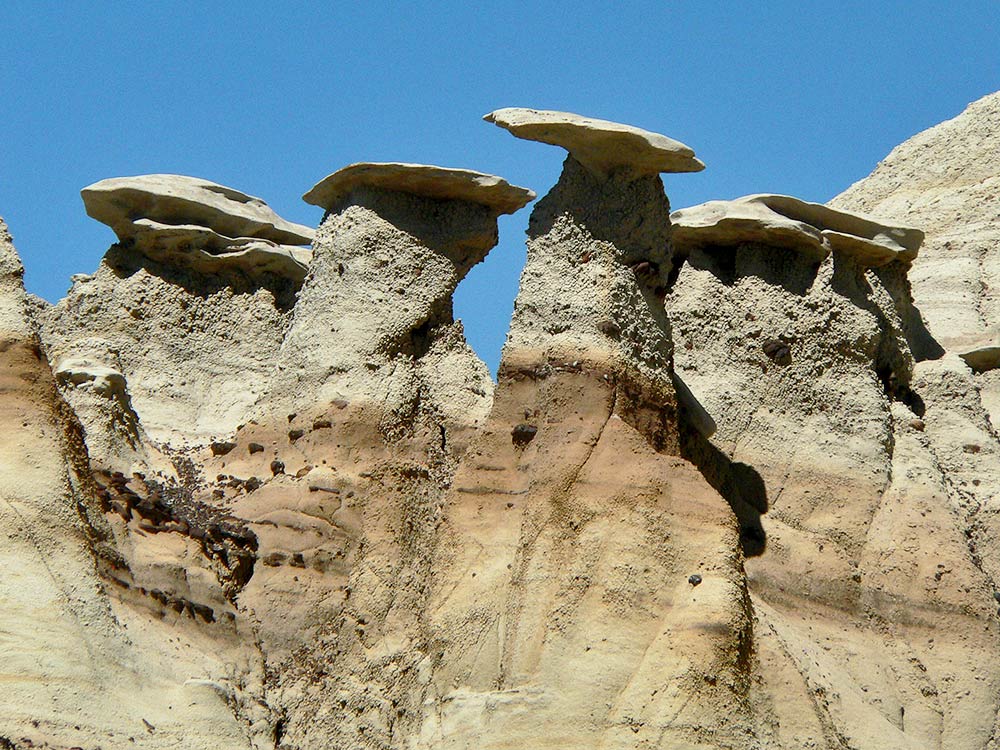
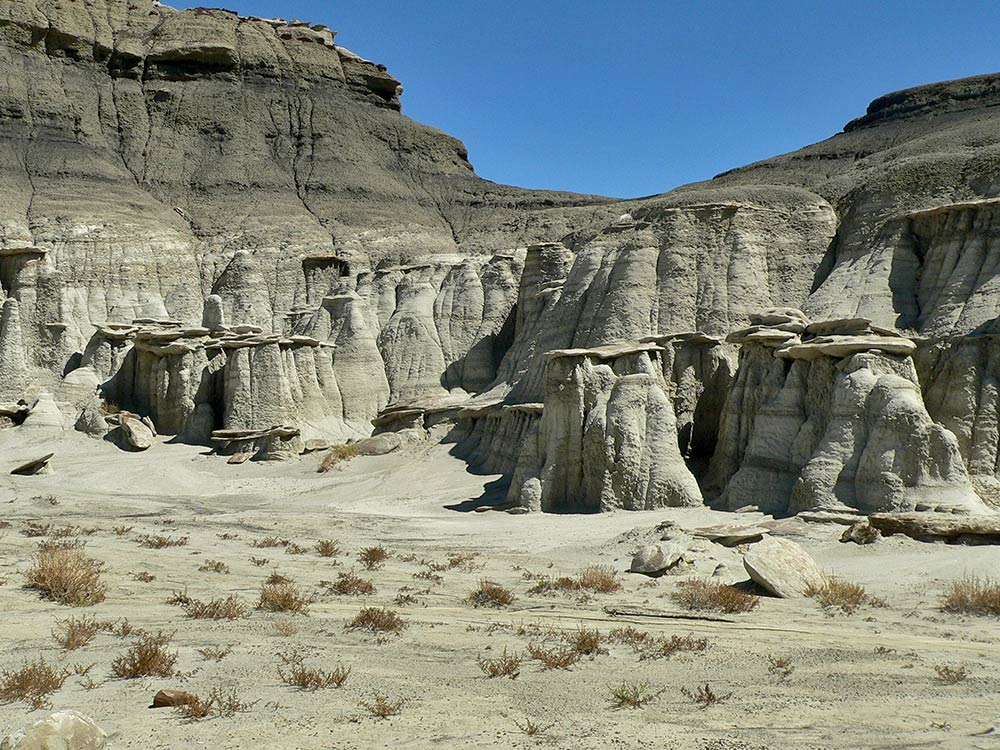

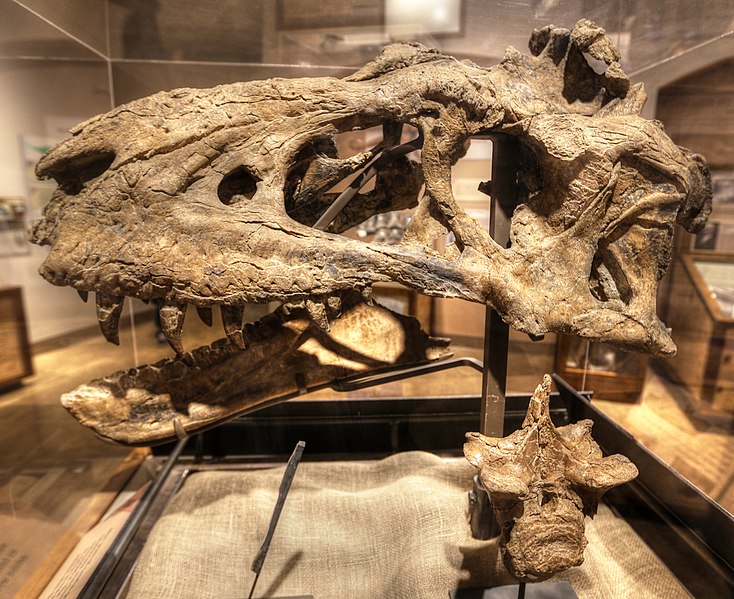

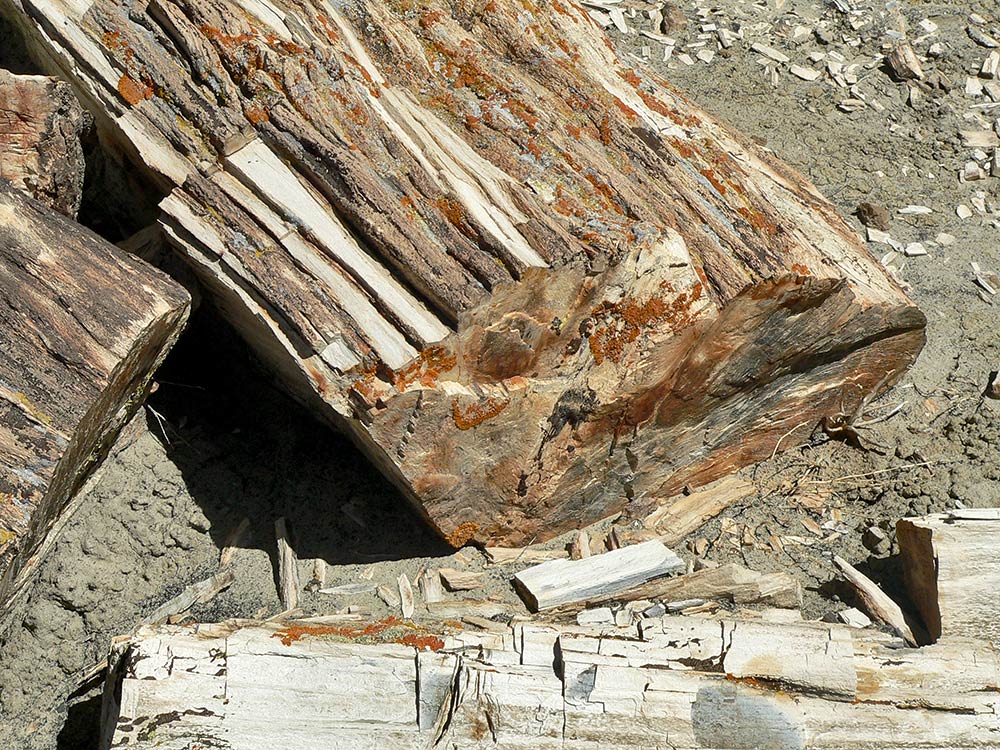

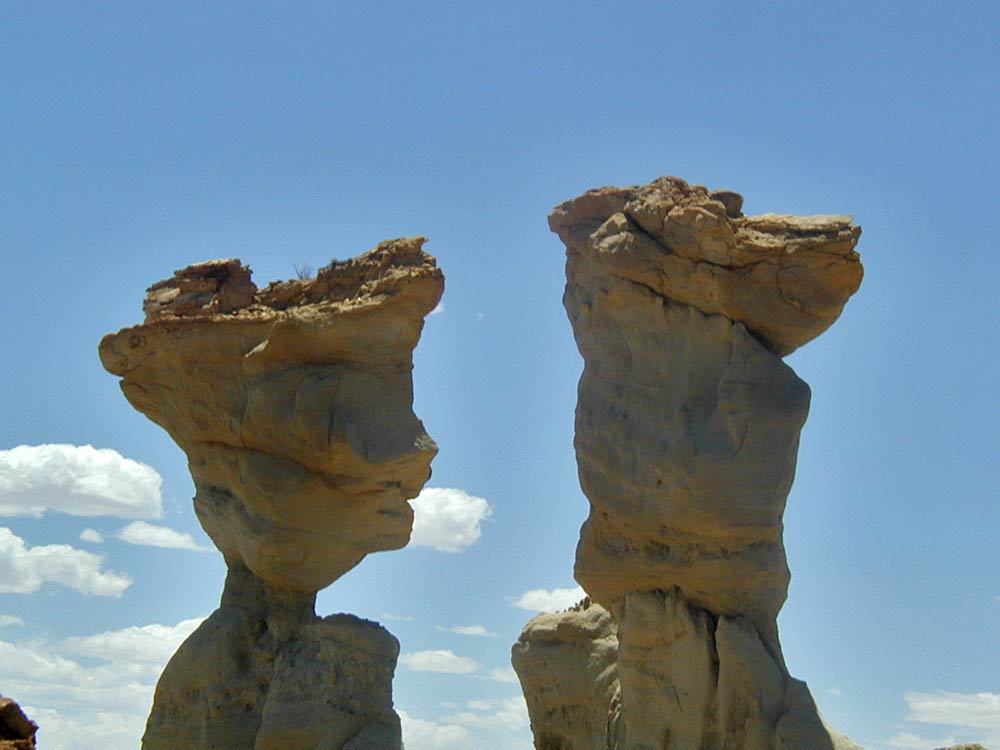

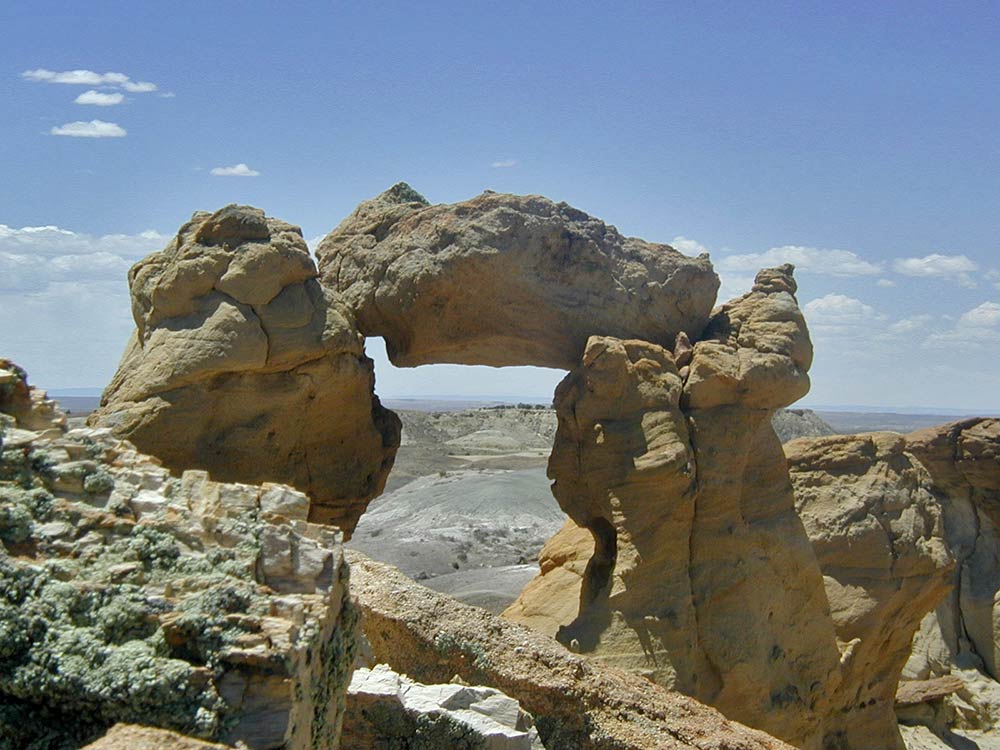



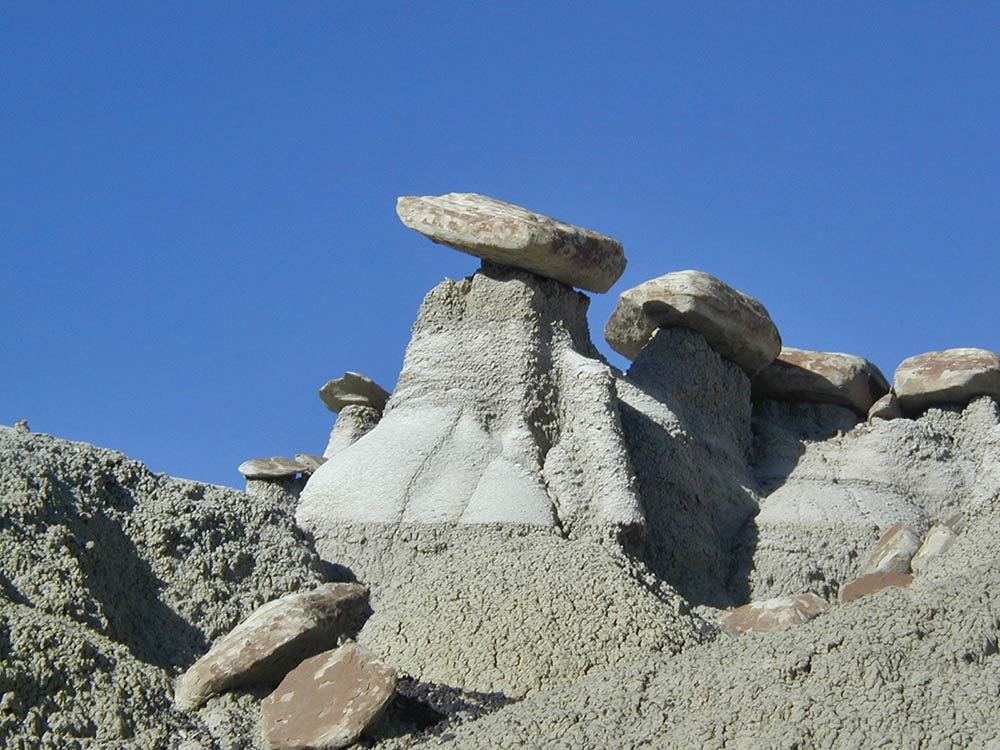





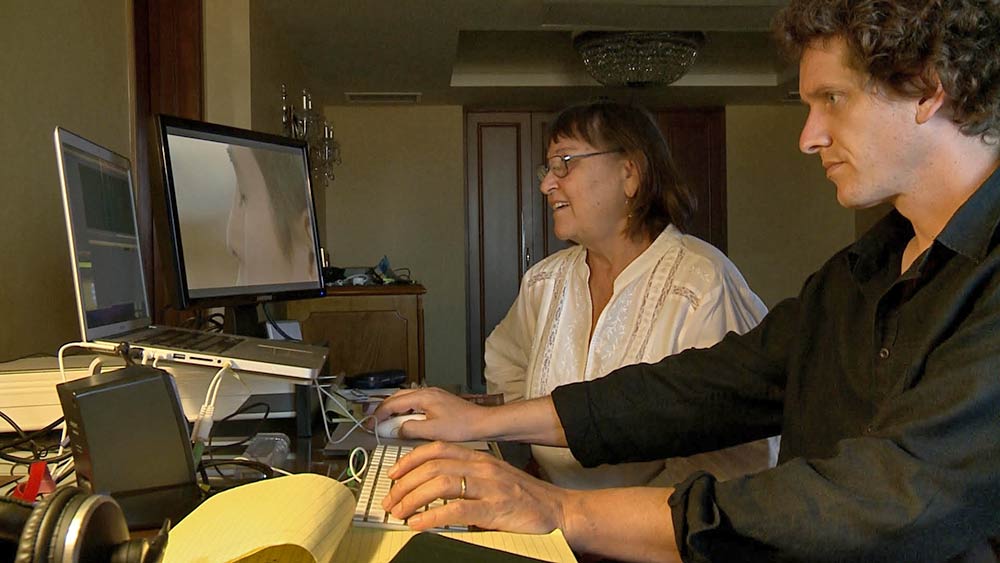










 RSS Feed
RSS Feed